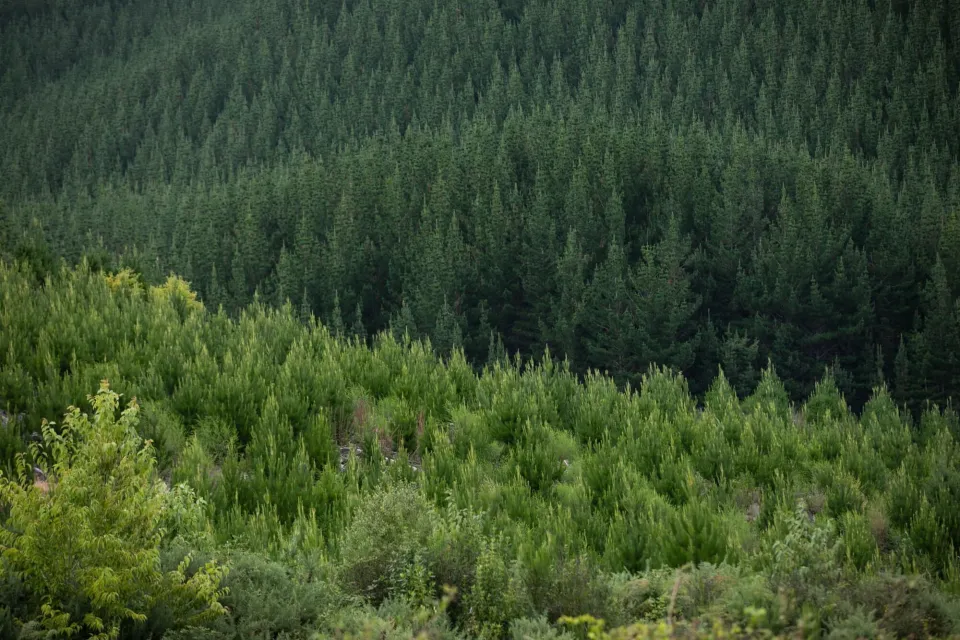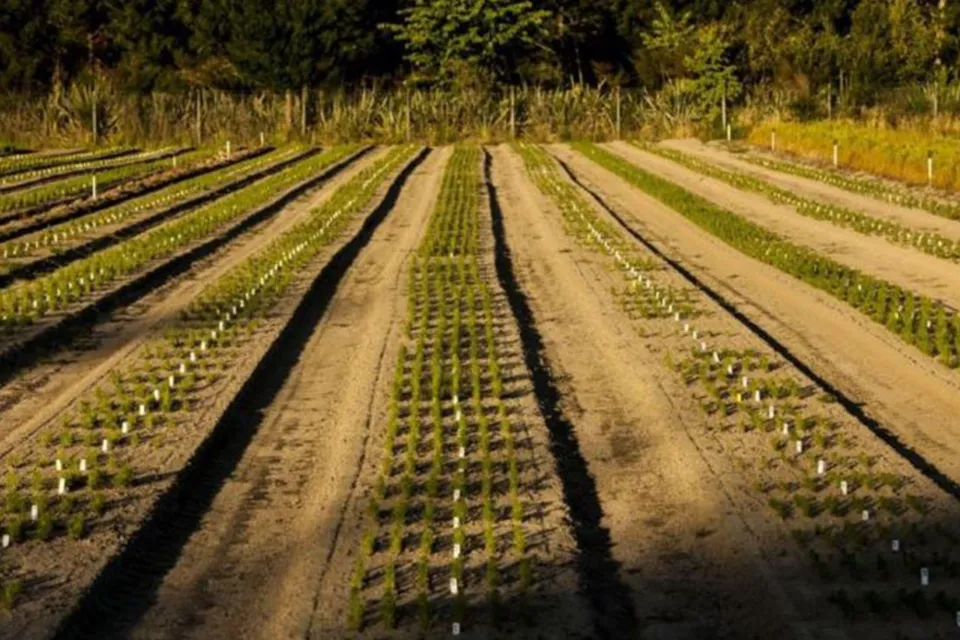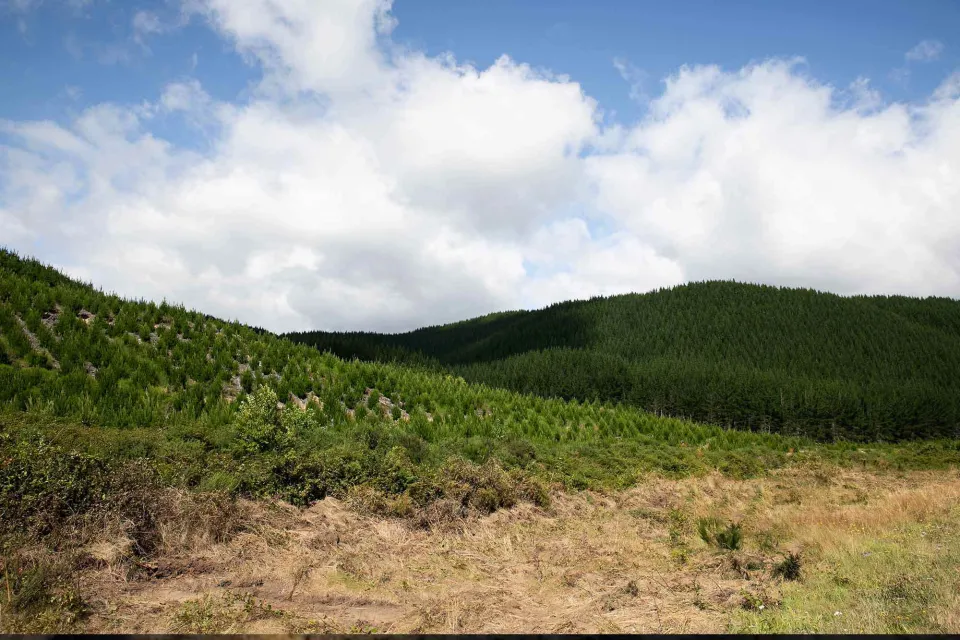-
About
-
Products
- By Timber Product
- Cladding
- Decking
- Screening
- Panelling
- View all
- By Application
- Exterior Cladding / Siding
- Exterior Rain Screen
- Interior Walls & Ceilings
- Soffits
- Screening, Fins & Battens
- Windows, Doors & Joinery
- Posts & Beams
- Accessories
- Coatings
- Fixings
-
Resources
- By Resource Type
- Technical Data Sheets
- Guides & Manuals
- Technical Articles
- Profile Drawings
- View all
- How To
- How to Specify
- How to Install
- How to Maintain
- Projects
- Contact
10 Myths About Planted Pine Forests
Debunking common myths about planted pine forests and their impact on ecosystem health.
New Zealand’s planted pine forests play a critical role in food and fibre production, our local and export economy and the growing demands of the building industry amid a critical housing shortage.
Forest Stewardship Council® certified rapidly renewable plantation forests such as those used by Abodo are an excellent way to support consumer demand while protecting our primary forests.
However, some myths about planted forests and their effect on ecosystem health persist. Join us as we debunk some of the most common misconceptions.
Myth One - Forests are not a sustainable use of land
Forests (native and planted) provide many ecosystem services including timber, fibre, recreation, water regulation, biodiversity, and soil stabilisation. They are also an excellent source of carbon sequestration, with forests holding about half of the world’s carbon.
Myth Two - Planted forests are bad for soil health
Evidence suggests well-managed planted forests can maintain or improve soil health. Depending on how trees are harvested, foresters can control the quantity of nutrients removed, with no impact on the long-term productivity of the site. Disrupting soil in the harvesting process can be beneficial, bringing unweathered material and subsoil to the surface.
Myth Three - Monoculture forests lack biodiversity
Planted pine forests support a diverse range of organisms, birds and plants. They are home to many species, including endangered and New Zealand natives, such as kiwi, kārearea (NZ falcon), kōura (freshwater crayfish) and huhu beetles. It’s also worth noting some indigenous forests such as mānuka plantations are essentially monocultures.
Myth Four - Pine trees are bad for nearby waterways
Streams in mature planted forests typically have high water quality, like those in native forests. All forests reduce sediment in waterways, particularly when compared with scrub or grassland.
Myth Five - Pine trees acidify soil
Generally, New Zealand’s soils are naturally acidic, with low levels of nitrogen, phosphorus and sulphur. Radiata pine forests are usually established on less fertile, steeper land with poor-quality soil that makes it unsuitable for agricultural and horticultural use.
Myth Six - Radiata pine is bad for the environment
Radiata pine is rapidly renewable, with a tree being ready for harvest in around 27 years. Some planted forests in New Zealand are already on their second, third or fourth rotation without negatively impacting site productivity. Previous research has shown there is more biodiversity in planted forests than in pastures and other productive land uses. A wide variety of species are found in planted forests, as mentioned in myth three.
Myth Seven - Planted pine is worse than agriculture
Over the past 40 years, the practice of establishing planted forests on historical pasture has increased. In doing so, farmers have seen significant improvements in nearby water quality indicators including better sediment and nutrient concentrations and reduced microbial contamination. On balance, planted forests are ecologically closer to native forests than any other productive systems we have in New Zealand, including food production and dairy farming.
Myth Eight - Planted forests damage ecosystem health
From ground level, it is easy to take a macroecological view of a planted forest that has little understory and assume this is the result of damage to the health of the ecosystem. However, it is deliberate. Most pine forest plantations are designed to close the canopy early, capturing the sun’s energy to produce wood, but they still support the thriving soil microorganisms that live underneath, as well as other flora and fauna that prefer a forest environment.
Myth Nine - Pines monopolise ground moisture
Forests can help recharge nearby aquifers and maintain groundwater flow in dry seasons, contributing to the security of water resources downstream. The deep roots of planted forests can also bind soil and slow slip movement, reducing erosion and decreasing run-off.
Myth Ten - Pine forests are taking over native forest land
Native forests in New Zealand have been heavily protected since the 1980s when the New Zealand Forest Accord came into effect and stopped the practice of felling native trees to make way for exotic forests. Planted pine forests help further protect New Zealand native forests and provides an alternative, sustainable source of timber by reducing the need to import timber from old-growth forests elsewhere in the world.
Plantation forests can help support global industries by using highly productive, well-managed sites with small footprints. This efficient approach to timber production helps us preserve the biodiversity and ecosystem surrounding our natural forests, while still responsibly meeting the growing demand for food, fibre, building material and fuel.




